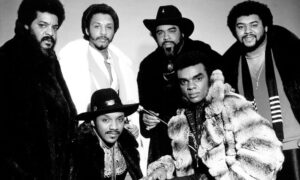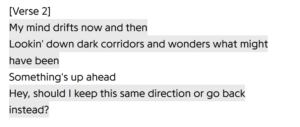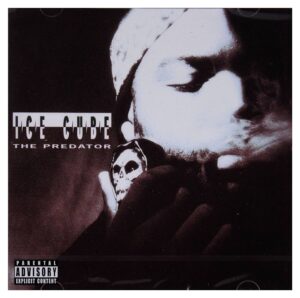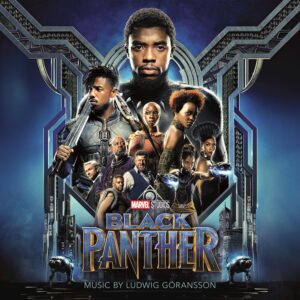The Musical Lineage of “i” by Kendrick Lamar
“i” is a song that doesn’t have many obvious related songs that directly influenced its writing. Of course, this by far isn’t the first song dealing with gang violence in Compton and self-deprecation of the Black community, but it’s difficult for us to know just which songs were relevant to Kendrick Lamar personally during his creation of the song. Perhaps it’s easiest to start with a song included in the instrumental for “i” from the Isley Brothers.
“Footsteps in the Dark” – The Isley Brothers (1973)
The Isley Brothers’ career has lasted more than six decades. The group from Ohio originally consisted of brothers O’Kelly Isley Jr., Rudolph Isley, and Ronald Isley as a v ocal trio, as well as Ernie Isley, Marvin Isley, and Rudolph’s brother-in-law Chris Jasper forming the instrumental side of the band. The trio was a heavy contributor to the genres of soul, R&B, and funk. These genres are integral parts of Black culture in America and across the world. In “i,” Lamar interpolates the Isley Brothers’ 1973 hit “That Lady.” Often, we see classic funk and soul songs sampled in hip-hop, but usually in a way that takes more creative liberty and sometimes obscures the original song into something completely new using the audio of the original record. Instead of sampling the Isley Brothers, Lamar uses re-recorded elements of “That Lady” in “i.” However, “That Lady” isn’t a song I believe carries as much weight in inspiring Lamar as another Isley Brothers song, “Footsteps in the Dark.” One of the most popular of their discography, the song’s lyrics deals with themes of indecisiveness and lacking confidence that one’s own personal decisions are serving them in the best possible way.
ocal trio, as well as Ernie Isley, Marvin Isley, and Rudolph’s brother-in-law Chris Jasper forming the instrumental side of the band. The trio was a heavy contributor to the genres of soul, R&B, and funk. These genres are integral parts of Black culture in America and across the world. In “i,” Lamar interpolates the Isley Brothers’ 1973 hit “That Lady.” Often, we see classic funk and soul songs sampled in hip-hop, but usually in a way that takes more creative liberty and sometimes obscures the original song into something completely new using the audio of the original record. Instead of sampling the Isley Brothers, Lamar uses re-recorded elements of “That Lady” in “i.” However, “That Lady” isn’t a song I believe carries as much weight in inspiring Lamar as another Isley Brothers song, “Footsteps in the Dark.” One of the most popular of their discography, the song’s lyrics deals with themes of indecisiveness and lacking confidence that one’s own personal decisions are serving them in the best possible way.
 This is often framed through the lens of a relationship in the song, though it extends to much more. When considering this song in relation to “i” it’s clear that Lamar is referencing this kind of feeling, but from a place of anger and frustration with ways in which Black communities lack confidence in themselves and their decisions because of the oppression they face that destroys their self-esteem. Understanding the ways in which the feeling Lamar portrays have been long-standing problems in the Black community help us to understand a new sense of urgency to the song, as he connects an Isley Brothers song from almost 50 years prior to issues that are still ongoing and remain unchanged.
This is often framed through the lens of a relationship in the song, though it extends to much more. When considering this song in relation to “i” it’s clear that Lamar is referencing this kind of feeling, but from a place of anger and frustration with ways in which Black communities lack confidence in themselves and their decisions because of the oppression they face that destroys their self-esteem. Understanding the ways in which the feeling Lamar portrays have been long-standing problems in the Black community help us to understand a new sense of urgency to the song, as he connects an Isley Brothers song from almost 50 years prior to issues that are still ongoing and remain unchanged.
“Footsteps in the Dark” is also important to the hip-hop community specifically, being sampled by Ice Cube in 1992.
“It Was a Good Day” – Ice Cube (1992)
 Ice Cube rose to fame as a member of popular rap group N.W.A in the mid 1980s, after coming up through a group called C.I.A. that performed at parties hosted by Dr. Dre. N.W.A was composed of Arabian Prince, MC Ren, Ice Cube, Eazy-E, DJ Yella, and Dr. Dre, most all of whom were from Compton, CA, similar to Kendrick Lamar. N.W.A was primarily known for its aggressive lyrics that threatened abusive police with violent action, trying to incite conversations surrounding the prison and policing systems in the neighborhoods they grew up in. This louder, more aggressive style of music is similar to the performance we find in “i,” as it expresses similar frustrations and threats through lyrics such as “I put a bullet in the back of the head, back of the head of the police.”
Ice Cube rose to fame as a member of popular rap group N.W.A in the mid 1980s, after coming up through a group called C.I.A. that performed at parties hosted by Dr. Dre. N.W.A was composed of Arabian Prince, MC Ren, Ice Cube, Eazy-E, DJ Yella, and Dr. Dre, most all of whom were from Compton, CA, similar to Kendrick Lamar. N.W.A was primarily known for its aggressive lyrics that threatened abusive police with violent action, trying to incite conversations surrounding the prison and policing systems in the neighborhoods they grew up in. This louder, more aggressive style of music is similar to the performance we find in “i,” as it expresses similar frustrations and threats through lyrics such as “I put a bullet in the back of the head, back of the head of the police.”
After his time with N.W.A, Ice Cube continued to enjoy commercial success as a solo artist. His earlier solo records were praised by the rap community and topped charts despite their similarly political messaging that validated the Black struggle. However, despite his aggressive and angry style of rapping, his 1992 song “It Was a Good Day” focuses on all in life which he’s thankful for and appreciative of through the lens of just one day in his life. The song’s instrumental is “Footsteps in the Dark” and features a loop of its instrumental intro/verse in the same way as Lamar uses “That Lady,” rather than a chopped up and manipulated sample that many artists typically use. His lyrics are also more profound than simply chronicling the things that have happened to him throughout the day that make him happy. Ice Cube includes lyrics that convey that simply not being harassed by the police constitute a day that’s unusually good: “Drove to the pad and hit the showers / Didn’t even get no static from them cowards / ‘Cause just yesterday, them fools tried to blast me / Saw the police, and they rolled right past me… Plus, nobody I know got killed in South Central LA / Today was a good day, shit!”
We see in “It Was a Good Day” a framework for “i” with an instrumental sample of a different Isley Brothers song that directly mentions the violence, police brutality, and absurdity of life as a Black man just outside of Compton in South Central Los Angeles. With this, we’re able to understand how localized many of the issues are to the community of Compton and neighboring parts of LA and California. While much of the discrimination that these songs take on are relatable to all Black people in America, there’s a clear trend that Compton is disproportionately affected in the accounts of these songs. These songs also both feature first person points of view, with Ice Cube using the personal pronoun I in nearly every line of his song, a strong inspiration and influence on Lamar’s song, which aims to take pride in the individual person hood of every Black person, especially when racist rhetoric often takes away individuality in addressing the entire race as the subject, rather than an individual person.
“I Am” – Jorja Smith (2018)
This song was written for and created as part of the soundtrack for the Marvel movie Black Panther, the first movie from the entertainment giant to feature a Black main character and a mostly Black cast. The soundtrack was produced by a number of people (headed by composer Ludwig Göransson), including Kendrick Lamar who played a pivotal role in the writing and performing of many of the songs on the collection. “I Am” is a song that doesn’t include Lamar, though he’s credited among several other writers and producers. That being said, it’s hard to tell how much of a role Lamar played in this song, if he dealt more with the instrumental, the lyrics, the themes, the melody, or some combination. However, this song shares a lot with “i” and comes just three years after the release of the album it was featured on, To Pimp a Butterfly. Firstly, it’s title is shockingly similar, signalling to us again that we’ll be dealing with themes of individuality. Most of the so ngs on the Black Panther soundtrack contain themes of discrimination and the Black condition, even when they’re slightly hidden to appeal to the larger context of the movie. “I Am” is among these with its first verse discussing the ways in which a lifetime of judgement from expressing the main character of the song’s personal opinions have left her feeling indifferent and defeated. Its chorus though, takes a slightly different turn, highlighting the necessity of change in the world and the ways in which we can’t hold onto the past forever. Smith also appeals to the discouraged defeat of a Black citizen who feels as though they’re inferior or worthless because of how they’re treated in society:
ngs on the Black Panther soundtrack contain themes of discrimination and the Black condition, even when they’re slightly hidden to appeal to the larger context of the movie. “I Am” is among these with its first verse discussing the ways in which a lifetime of judgement from expressing the main character of the song’s personal opinions have left her feeling indifferent and defeated. Its chorus though, takes a slightly different turn, highlighting the necessity of change in the world and the ways in which we can’t hold onto the past forever. Smith also appeals to the discouraged defeat of a Black citizen who feels as though they’re inferior or worthless because of how they’re treated in society:
October 3, 2023 at 4:14 am
An excellent discussion, Colin. Be aware, though, that by lineage we don’t necessarily mean “informed.” Song lineages are merely those that cover similar themes, and as you are working on your podcast I’d also like you to continue looking for such songs — and there are many, as you might suspect, especially considering the range of topics Lamar covers.
Bill